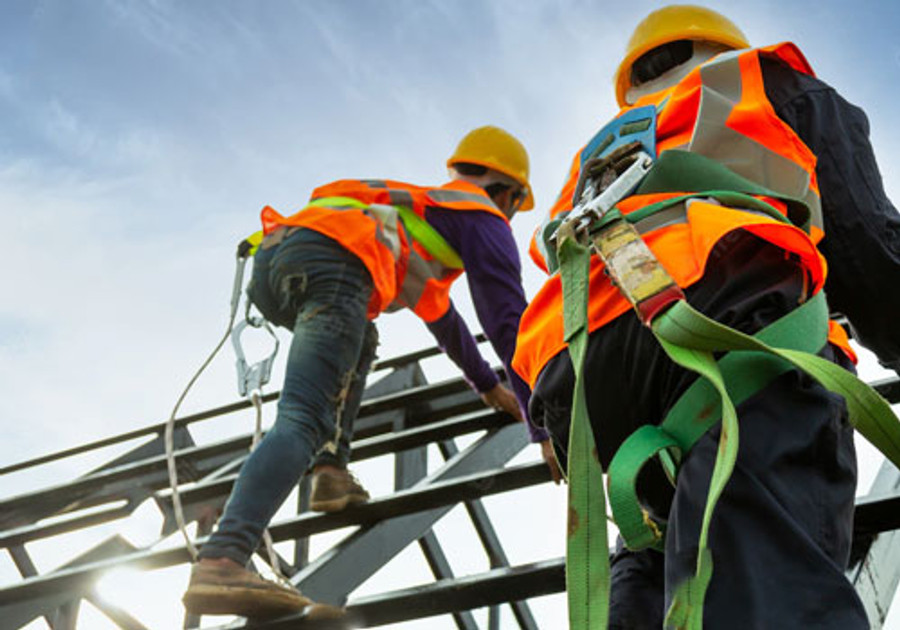What is a Vertical Lifeline?
Posted by Howie Scarboro - CEO Fall Protection Distributors, LLC on Mar 15th 2021
Introduction
Although accidents happen, vertical lifelines can be one of the best tools to prevent potentially deadly accidents and falls. Nevertheless, if you are not aware of how well they work and how they differ from other similar tools, you still may fall short in terms of protecting yourself and your staff. With that in mind, the following is a closer look at vertical lifelines.
For those who are yet unfamiliar, a vertical lifeline is a lifeline system that typically consists of a cable, track, or rope that is attached to a full-body harness and lanyard. They are designed to keep workers safe when they are completing tasks near railings, skylight screens, etc., as well as while doing things such as climbing to heights that are innately dangerous. Rather than taking a risk and completing these tasks without the proper protection, using a vertical lifeline can be one of the best ways to stay safe while completing risky tasks. Moreover, there are plenty of benefits of purchasing a vertical lifeline such as:
- Simple Setup: Provided that you can follow simple instructions, vertical lifelines are pretty easy to set up. Also, they can be used in virtually any environment.
- Non-Invasive: Although they provide optimal safety protection, vertical lifelines are relatively non-invasive and easy to use.
- Multiple Workers: Moreover, depending on the type of vertical lifeline you purchase, you can support up to 4 workers per line.
- Easy Disconnection: Despite the sturdy connection, the vertical lifeline is easy to disconnect. No matter why you need to disconnect, you can quickly and easily disconnect from the lifeline.
- Low Maintenance: Generally speaking, vertical lifelines are low maintenance. As long as you are taking care of them properly, you will almost never need to have them serviced or repaired.
- Power Absorbers: Vertical lifelines also include power absorbers that protect anchors in case of overhead.
The Difference Between Vertical Lifeline and Horizontal Lifeline
In order to understand the difference between a vertical and horizontal lifeline, we must understand the difference between a vertical and horizontal fall. On the one hand, horizontal falls occur when someone experiences a trip or fall while they are working, moving, or standing on one single level. On the other hand, vertical falls occur when individuals are moving from one level to another.
Therefore, when you are trying to understand the difference between a vertical or horizontal lifeline, you must understand that one is designed to keep us safe while staying on the same level while the other keeps us safe as we change levels. On the one hand, a horizontal lifeline includes a harness and a horizontal lifeline system. This lifeline is typically composed of a flexible line that is suspended and secured to anchorages horizontally. On the other hand, a vertical lifeline is a lifeline harness that is connected via a vertically suspended line. These systems also feature a fall arrester, which helps aid in vertical fall rescues. Either way, even though these tools are highly useful and effective, employees must be properly trained to avoid being injured as a result of improperly using them or failing to properly respond once an accident has occurred.
Looking for Premium Quality Vertical Lifelines?
Despite the fact that, for the most part, vertical lifelines can be an effective tool to help keep you and our staff safe, they are not all created equal. As such, you should always take your time to research any company before purchasing a vertical lifeline. You must also take the time to research the brands being offered. Rather than simply going with the first or cheapest option you find, taking the time to research vertical lifelines before purchasing them is one of the best things to do to ensure that you will remain as safe as possible, rather than simply hoping for the best. Otherwise, not only do you have to worry about people becoming injured, but you could also be subjected to highly expensive lawsuits, bad press, and much more. This means you should be going above and beyond to ensure that you are purchasing only premium quality vertical lifelines, from top vendors, such as the Fall Protection Distributors. Please contact us today for more information.

